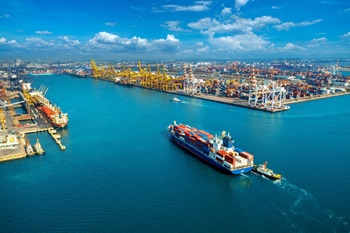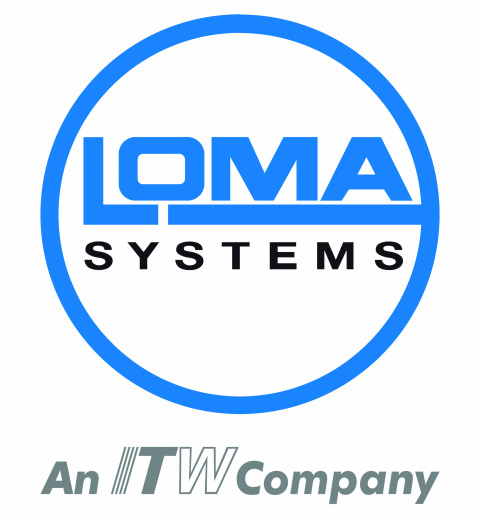
<p align="center" style="text-align:center;"><em>Reciprocal tariffs and levies on steel and aluminum will likely impact the price of groceries in the months ahead, but it will not be a one-to-one increase.</em></p><p>By Andy Harig, Vice President, Tax, Trade, Sustainability and Policy Development, FMI<br /></p><img src="https://www.fmi.org/images/default-source/blog-images/cargo-ship-entering-harbor.tmb-large-350-.jpg?Culture=en&sfvrsn=7a92b649_1" style="margin-bottom:10px;float:right;" alt="Cargo Ship Entering Harbor" sf-size="100" /><p>Earlier this month, the Trump administration put in place a sweeping set of reciprocal tariffs that increase levies on all goods being imported from various countries, including food and agricultural products. Steel and aluminum tariffs have also been in place since June. I recently sat down with Dr. Ricky Volpe, Professor of Agribusiness at Cal Poly, to discuss what these tariffs mean for food price inflation in the months ahead. <br /></p><p><strong>Harig</strong>: Dr. Volpe, let’s first start with the overall economic backdrop regarding food prices so we understand how tariffs could impact that dynamic. What does the current environment look like?<br /></p><p><strong>Volpe</strong>: One of the primary measures of food price inflation is the Consumer Price Index (CPI). The July CPI data shows that prices rose overall by 0.2% for the month, while food-at-home prices actually decreased by 0.1%. Zooming out to a year-over-year view, overall price increases totaled 2.7% since July 2024, while food-at-home saw a lesser rise of 2.2% over that same period. This is right in line with the historical average for grocery inflation, which is good news after the period from 2021-2023 when we saw rapid price increases. <br /></p><p><strong>Harig</strong>: Grocery shoppers are highly price-sensitive, especially following that inflationary period you mentioned. To what extent will these reciprocal tariffs change the inflationary environment for grocery shoppers?<br /></p><p><strong>Volpe</strong>: It’s important to remember that 80% of the food consumed in the U.S. is produced domestically. A large portion of the 20% we import comes from Mexico and Canada, products that are currently exempt from tariffs under USMCA. That leaves very specific categories coming from other countries that will be impacted by tariffs, such as seafood, coffee, wine and spirits, and spices, among others. This means that, overall, the effects of tariffs on food inflation generally will likely be less severe than for other industries that are much more reliant on imports, assuming USMCA products continue to be exempt.<br /></p><p>However, I would also point out that the steel and aluminum tariffs will probably have a broader impact on food prices because of how much these metals are used throughout the supply chain – from packaging to store construction and shelving to food processing machinery to farm equipment. From an economist’s perspective, it will be hard to quantify how much tariffs are directly tied to food price increases over the coming months. The impacts will be spread out over time depending on company investments and the varied, but more indirect, roles that steel and aluminum play throughout the food system. <br /></p><p>All that being said, there are ongoing structural supply chain challenges that will continue to put upward pressure on groceries beyond tariffs. <br /></p><p><strong>Harig</strong>: Let’s talk about that. After all, these tariffs aren’t occurring in a vacuum.<br /></p><p><strong>Volpe</strong>: You’re absolutely right. Wildfires, floods, extreme heat and drought, animal and plant disease outbreaks, energy prices and labor shortages – all of these things put pressure on the food supply. Tariffs are yet another pain point for an industry that operates on just <a href="https://www.fmi.org/our-research/research-reports/food-retailing-industry-speaks">1.7% profit margins</a>. The good news is that, other than tariffs, none of this is particularly new. The industry has been navigating these challenges for years and is incredibly resilient in finding solutions and keeping costs as low as possible for shoppers. <br /></p><p><strong>Harig</strong>: The Trump administration’s stated goal of imposing tariffs is to bring back jobs and production to the United States, an objective that FMI agrees with even if we think a more targeted approach is warranted. Will we see more U.S. production because of these policies? <br /></p><p><strong>Volpe</strong>: For the products that we import, the vast majority of them are goods that we cannot grow domestically at all or that we can’t produce enough of to meet consumer demand for a variety of reasons – available farmland, proper climate, appropriate soil conditions, etc. Unlike other industries, food production has unique requirements that make it difficult to reshore the products that we’ve come to enjoy as consumers year-round. There’s also the cost dynamics of doing so even if we could. I recently wrote a <a href="https://www.fmi.org/industry-topics/fact-sheet/reshoring-production–a-look-at-cucumbers">white paper</a> exploring what would happen if we could snap our fingers and grow 90% of our cucumbers here in the United States (we currently import about 90%). My analysis found that we would largely need to use controlled environment agriculture – i.e., greenhouses – to do so, which is much more cost-intensive. Cucumber prices would effectively double, which is obviously not ideal for grocery shoppers. With imports, we’re able to keep prices lower for the things we can’t easily produce and focus on the products we can grow more efficiently. <br /></p><p><strong>Harig</strong>: One thing we often get asked about is how much of the tariffs will be passed on to consumers. Can you address that? <br /></p><p><strong>Volpe</strong>: The important thing to note is that tariffs will not lead to a one-to-one price increase for consumers in most cases. For minimally processed goods like whole produce or vegetables, roughly 60-70% of the tariff could be carried through to the price on the store shelf. But for more processed goods with a greater number of ingredients, the impact of the tariffs could be much lower. Cinnamon is a good example. If you’re buying a cinnamon raisin bagel, the majority of the ingredients that go into those products are not going to see a tariff as they’re grown here. So, if we impose a tariff on cinnamon, which cannot be grown domestically, we might see just a 1-2% price increase because it makes up such a small portion of the final product. <br /></p><p><strong>Harig</strong>: Last question for you, Dr. Volpe. You noted at the top that food price inflation is currently hovering around historically average levels. However, tariffs have been in place for a few months now. The question on everyone’s mind is, are we actually going to see price increases because of them, and if so, when should we expect to see them have an effect?<br /></p><p><strong>Volpe</strong>: I anticipate that we will eventually see an uptick in food prices, although the magnitude remains to be seen. The reason why we haven’t seen that happen yet is because it takes time for shocks to work through the supply chain. These tariffs haven’t been in place for very long yet, and companies have been hesitant to raise prices up to this point because of the uncertain environment. Now, companies are starting to execute their plans and negotiate with suppliers. </p><p>Additionally, the steel and aluminum tariffs will likely take much longer to have an impact because businesses were able to stockpile packaging inventories in advance of the tariffs and because capital investments requiring these metals occur over a longer timeframe. I suspect by the end of the year, we’ll have a clearer picture of the impact of tariffs and they will start to show up in the prices on store shelves. <br /></p><p><strong>Harig</strong>: Thank you, Dr. Volpe, for that informative discussion. FMI and the food retail industry share the Trump administration’s commitment to strengthening American jobs, revitalizing domestic manufacturing and supporting consumers’ grocery budgets. We appreciate the administration’s economic objectives to create an environment that supports American competitiveness, and we stand ready to be a resource on how trade policies, including tariffs, impact consumer costs and food supply chains.</p>Read More
















